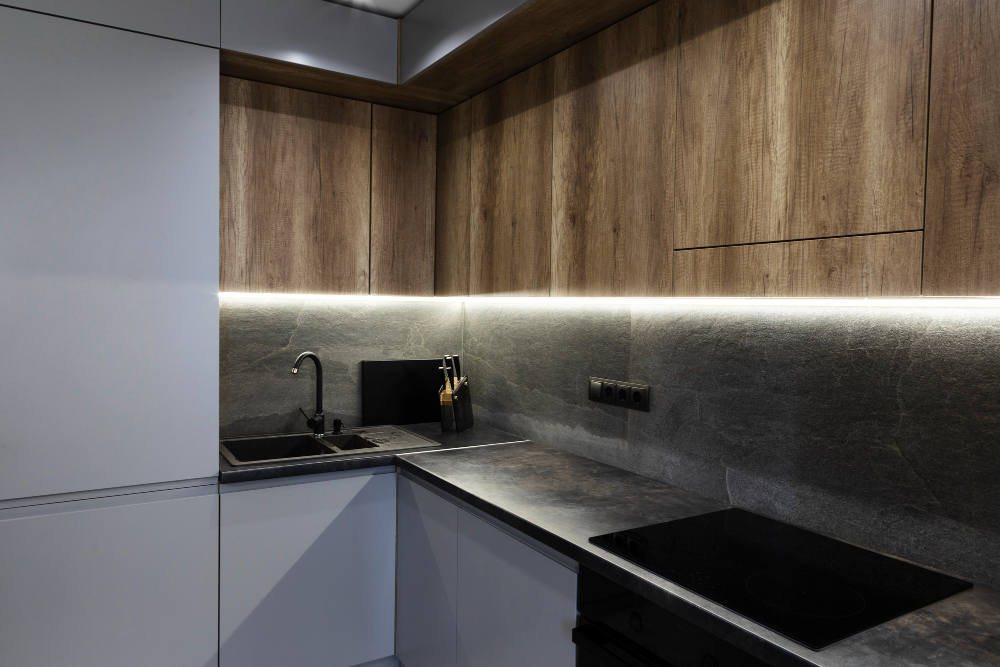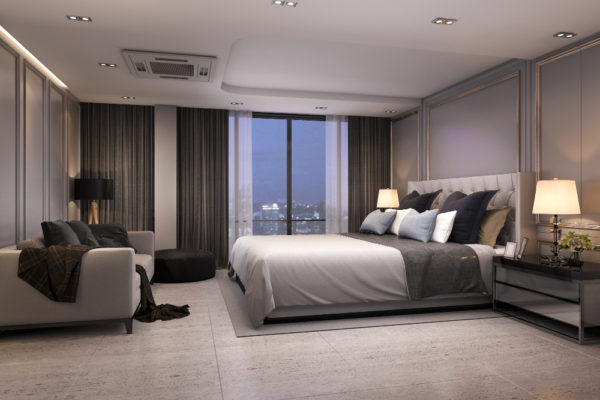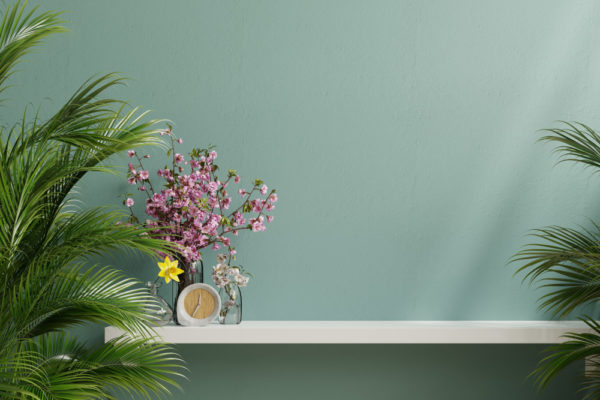Kitchen lighting ideas Australia
If there is one thing that unites all housing types, from typical apartments and double storey homes to the grandest of multi-roomed mansions, it’s the humble kitchen. It has performed a unique, essential service to humanity since the dawn of time and continues to be the most versatile and multi-tasking of all our rooms to this day. All activities can be found happening in the kitchen at one time or another and that makes it a very powerful room both practically and emotionally. Your kitchen requires the right balance of lighting to really operate like the multi-functional hub of activity it is so frequently expected to be whilst still managing to feel both inviting and comfortable as an interior space.
Before we get started with this guide to giving your kitchen the lighting it deserves and demands, it is worth discussing the three accepted types of lighting that we can utilise to our advantage in any given scenario.
Ambient lighting
This is the main source of light in any room and refers to both naturally occurring and artificial forms of lighting. Its job in the home is to provide the maximum amount of light coverage when required without being blinding or casting excessive shadows. Traditionally houses in the past often used a single hanging, shaded bulb to ineffectively light most rooms and workplaces had the ubiquitous fluorescent lights to achieve even distribution of ambient light, but in modern times there are many other options to discuss.

Task lighting
Ambient lighting is great at diffusing light fairly evenly across any given space but when more focused activities are required it cannot compete with specific task lighting. Direct illumination of any smaller area to allow greater visibility of the objects therein is essential in almost any room in the home and the kitchen is no exception.
Accent lighting
While the first two light types are purely practical, accent lighting is the more artistic and decadent option. Accent lighting is used to highlight your favourite objects or architectural features and provides very little extra light beyond that which falls on the beloved object. It is the least essential of the three, especially in a working kitchen but when used cleverly it can make a huge difference to the ambience and focus of any space.
Key lighting in the kitchen
Clearly, all kitchens are different from each other and some of the tips mentioned here will not be applicable in all situations. However, there are some fundamental principles that apply whether we are talking about spacious double storey homes or basement apartments. Each of us must assess our own particular location and decide how best to light it to ensure that all three types of lighting are represented effectively and artistically if possible.
The kitchen island
The kitchen island or ‘breakfast bar’ is the place where we might expect to see any and all activities, from homework furiously being completed and makeup applied, to newspapers and interior design catalogues being browsed through. It is important to have enough directional task lighting above the kitchen island to boost the available ambient lighting and facilitate these and other kinds of activities. There are no better options for this than modern LED lights, they can be just as bright as you want them to be and are often able to be altered directionally. The icing on the cake is that they cost an absolute fraction to use when compared to traditional bulbs that get hot and waste energy.
The kitchen work surface
It may come as a shock to some people to learn that kitchens are actually designed for the preparation of food and this needs to be properly catered for. Depending on the cabinet placement it might be impossible to utilise downward-facing ceiling lights to light your stove-top and cooking surfaces, and this is where recessed downlighting steps up to shine. Again, LED lights are perfect for this role but this time they will be hidden in the bottom edges of the cabinets above. Place the lights in straight lines along the axis of your counters for maximum coverage and this provides even more direct light than ceiling-based options. This extra light is a very welcome addition when handling sharp objects or hot pans and trying to read complex recipes. This is especially true in kitchens like the kind found in typical double storey homes, as you have your back to the main source of ambient lighting when facing the stove-top and are therefore casting your own shadow onto your working surface.
Strip lights
LED strip lights are exceptionally practical and versatile and are great for illuminating all kinds of areas from the interiors of low cabinets and pantry shelves to fridge-tops and other areas that miss most of the ambient light. Step back and ask yourself if there are any areas of your kitchen that are not being effectively utilised because they are too poorly lit. Strip lights are your new best friend, use them liberally and they will literally help you to reinvent your kitchen.
Floor level lighting
Although accent lighting will be used sparingly in any kitchen it can still play a part. Think about how attractive kitchen cabinets are that have floor level or ‘toe-kick’ lighting in place. This can be achieved with the strategic placement of some inexpensive puck lights or the endlessly practical LED strips and really gives an inviting and classy feel to any kitchen.
At the end of the day, your goal should be to splash light attractively and evenly throughout your kitchen and ensure that working and high-use areas have enough extra to be used comfortably. It may be that when you are relaxing at the end of a hard day with a well-earned beverage that you will turn on those less aggressive lights and be glad that you took the time to focus on lighting the most important room in the house with care and attention.
05 Nov 2021




 home since 2006.
home since 2006.




